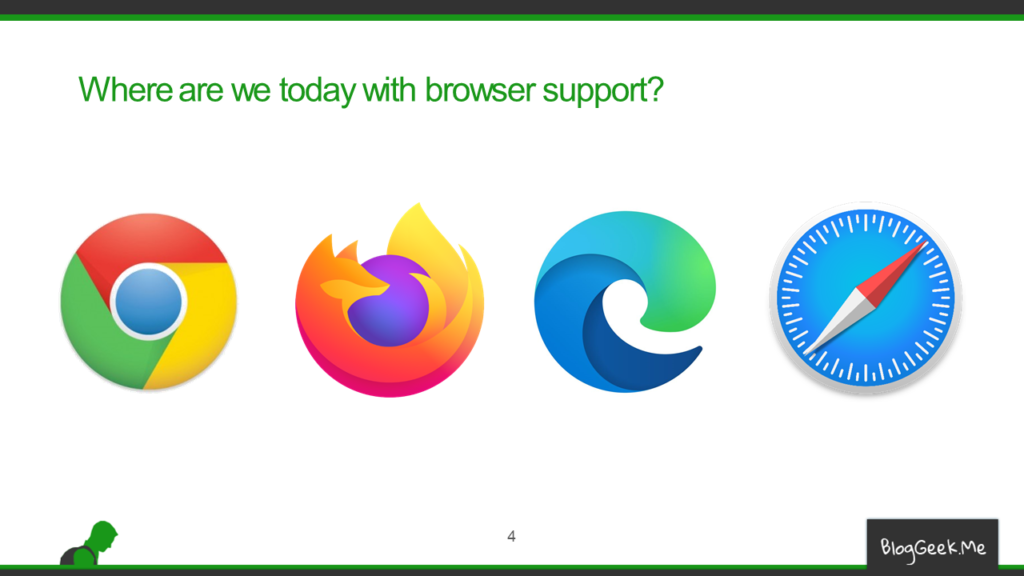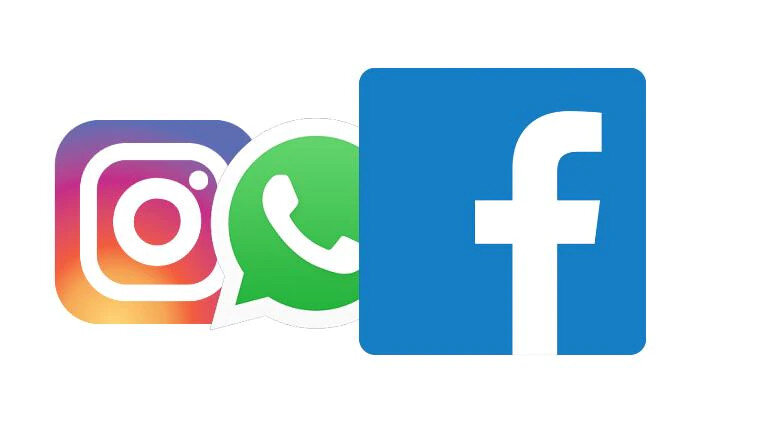The WebRTC market global key players may be different than you think. They include the browser vendors, a few CPaaS vendors, dominant “creators” of WebRTC sessions and… open source projects.

The title for this post came from one of the many lead generating headlines I see for reports that mention companies that no longer exist in our market. It is sad in a way: The same market report released every year, with the main difference between the last one being X+1 where X denotes a year mentioned in the report.
(if you are about to purchase a market report on WebRTC – make sure the companies mentioned there actually do something meaningful in WebRTC – check against the companies listed here – or just ask me)
My intent here is to actually ask the question – Who are the WebRTC Market Global Key Players? – and then also answer it.
I’d like to segment the key players in WebRTC into 4 main groups:
- Browser vendors
- CPaaS vendors
- Customer facing services
- Open source projects
1. Browser vendors
There are exactly 4 browser vendors that are interesting. The rest? Less so.

I will list them here in the order of their importance to WebRTC.
Google Chrome
This one is obvious. Google is the main driving force behind WebRTC. They aren’t alone in being there, but they are the dominant browser player in market share AND they host the most popular implementation of WebRTC (that would be libwebrtc).
In many ways, Google decides where WebRTC is headed. It does that in 3 different angles:
1. libwebrtc and Chromium
Maintaining the most popular WebRTC implementation (did I say that already?).
So much so that all browser vendors use this implementation in one way or another (either directly or indirectly by copying the pieces of it that they want/need).
I’ve added here also Chromium. This is the open source components of the Chrome browser and it is used in MANY important projects:
- Microsoft now operates Edge (its new browser) on top of Chromium
- Electron, which is quite popular in packaging web apps as installable apps is built on top of Chromium
- Many of the “other” browsers out there are implemented on top of Chromium
2. Chrome
THE market leader in browsers.

Taken from StatCounter (and yes. It also includes mobile)
Need I say more on how that influences WebRTC adoption and implementation?
3. Google Apps
We used to have only Hangouts using WebRTC at Google.
Now we’ve got a lot more.
The shortlist I am aware of include:
- Google Hangouts / Google Meet
- Google Duo
- Google Stadia
- Chrome Remote Desktop
- YouTube Live
For these, Google has their own agenda with their own WebRTC roadmap. This means that the requirements that fall into any of these services end up either directly as part of the open source WebRTC implementation distributed by Google – or Chrome alone.
Apple Safari
Apple has been quiet about WebRTC. That’s true about Apple and a lot of other technologies as well.
That said, Safari now supports WebRTC in Mac and iOS for a couple of years now (there are those who missed that fact).
While Apple has no other direct involvement around WebRTC, all developers and entrepreneurs are affected by their decisions about WebRTC. A lot more than in any other case.
Point in case is WebRTC iPhone support:
- You can build your own native app with WebRTC on an iPhone. This was always true
- You can run a web app using WebRTC on an iPhone inside Safari
- You can’t run a web app using WebRTC on an iPhone in any other iOS browsers – just because WebKit on iOS still doesn’t support WebRTC properly
Microsoft Edge

While Edge didn’t enjoy any growth or market share, this may soon change.
Microsoft decided a bit over a year ago to stop investing its resources and focus on building a browser engine, and instead took Chromium “as is”, building their Edge browser on top of it.
Somehow, I am assuming (hopefully) that this change also means that more Microsoft engineers are involved in the inner workings of Chromium itself, optimizing it to run on Windows and elsewhere for their own scenarios.
Apple is more important than Microsoft when it comes to WebRTC simply due to the current state of market share of their browsers.
Mozilla Firefox
Firefox is the 4th important browser and decision maker in the table of WebRTC.
It isn’t as important as the rest since its only “contribution” to the game is Firefox itself whereas the other browser vendors here come with operating systems and applications of their own as well.
Nevertheless, it is way more important than all other browsers not mentioned here combined.
2. CPaaS vendors

CPaaS vendors enable others to build their applications without delving into the communication technology stack too much. In many cases, that includes support for WebRTC as well.
To me, they are key players within this industry, and I want to mention those that are the most important when it comes to WebRTC adoption.
Twilio
Twilio is the leader in CPaaS. It is also one of the dominant players when it comes to WebRTC in CPaaS.
When it comes to voice calls via WebRTC done through CPaaS, Twilio are probably the largest player. Twilio has a lot of visibility to issues and requirements related to voice use cases, especially ones related to call centers.
Twilio is also growing in their video use of WebRTC.
Vonage
Vonage is the owner of TokBox, now part of its API platform.
As one of the leading video API platforms using WebRTC, TokBox is important. As with Twilio, this stems from their visibility to issues and requirements, but in this case, related to video use cases.
Others?
There are other interesting CPaaS vendors in the WebRTC space, but none of them are dominant enough.
The ones worth mentioning in this context?
- Vidyo/Enghouse – due to their use and focus on SVC and VP9/AV1
- Agora – due to their research of ML/AI in audio and video domains
- Dolby – due to their work around 3D voice
3. Customer facing services
Customer facing services are the end products. What users interact with when it comes to WebRTC. This title won’t get a vendor to be a global key player unless there’s a real reason…

Facebook is huge. Doesn’t matter if you look at Messenger, WhatsApp or Instagram.
Messenger uses WebRTC.
Instagram uses WebRTC for its live chat.
WhatsApp doesn’t use WebRTC directly, but there’s ongoing effort to consolidate the infrastructure of all these messaging platforms at Facebook. Will we be seeing 2 billion WhatsApp users able to conduct voice and video calls by way WebRTC in 2020?
Then there’s the Portal device.
Anyways, the sheer size of Facebook, along with their work with WebRTC places them as a market leader in WebRTC use. And due to their size, they are also largely alone here.
No one else 🙁
There are vendors that contribute large WebRTC traffic. But other than Facebook, I am not sure who else to include here.
Maybe Discord.
Probably Amazon. Due to multiple products and that minor thing called AWS.
I decided not to put any of the enterprise vendors. I think they should matter more, but got a feeling that they don’t at the moment.
4. Open source projects

These are sometimes neglected when discussing market leaders, which is rather sad. A lot of the development and WebRTC traffic out there ends up going through some of these open source projects, which is why I’ve added them here.
It is apparent that some projects should have a seat at the table. When Kurento got acquired by Twilio, there was a year when many of the discussions I had was about finding a suitable replacement for them.
If WebRTC open source projects fail to make progress, upgrade or just die, they affect those using them. The popular open source projects matter. A lot. They are at the heart of the WebRTC ecosystem.
Janus
I’ve decided to put Janus first because:
- Wherever it is used, there is use of WebRTC
- It is very versatile and flexible. I see it in a lot of different use cases
- It is quite popular
Jitsi
Jitsi is now owned by 8×8 after switching hands.
It is still run as an independent open source project and is widely deployed.
FreeSWITCH
FreeSWITCH comes from the telephony world.
Not in all of the deployments of FreeSWITCH out there WebRTC is used, but when companies need to connect telephony to WebRTC, they often go with FreeSWITCH for that.
Since FreeSWITCH is so common in so many of these instances, they are important for the WebRTC ecosystem
Kurento (to some extent)
To some extent, Kurento still matters.
Kurento is a shadow of its former glory prior to the acquisition. It isn’t part of Twilio – Twilio acqui-hired the developers, but not the name. Kurento lives on, but different.
It is being developed alongside OpenVidu, but the progress made to both seems somehow slower than the other open source projects mentioned here.
I am not sure they are a key player anymore.
Others?
There are other important projects that can/should make the title of key players in WebRTC. The 3 that immediately come to mind are mediasoup, PION and Asterisk.
Why haven’t I added them? Because their popularity is lower than the others.
For mediasoup and PION it is just that they are newer. They are growing, so I believe they will become key players if they continue in the current adaption trajectory.
For Asterisk, it is because they are used in a similar fashion to FreeSWITCH. I just don’t see them as much in the conversations around WebRTC that I have.
What does it mean to be a “WebRTC Market Global Key Player”?
This is where I started the article, and I think it bears thinking about.
When one coins a company as a “WebRTC Market Global Key Player” what does that mean exactly?
For me that means that they have the ability and potential to affect what happens with WebRTC moving forward.
While the standardization work is done in the W3C, a lot of the work happens elsewhere. In what Google places into Chrome as experiments and later as features. In what Apple decides to implement or not implement in Apple. In what CPaaS vendors deliver to their many customers and the feedback they get. In the companies that build large scale products and in the open source projects that make up a large portion of these products.
There are steps one can take to become a more dominant player. To be able to join the conversation and affect where WebRTC is headed. While I’ve conversed with many who want to become dominant players, only a few have the courage and the willingness to invest the time and resources needed.
Want to know who the global key players are? Don’t read it in a copy+paste research paper that is poorly updated…

What about coTURN it is like any SFU it is a key component in WebRTC space.
Mihály,
I’d say you’re probably correct. In a way, I missed coTURN in my list. That said, I think its effect on where WebRTC is headed in future decision making processes is rather low.
I see the combination of Kurento+Janus as the optimal option, as Kurento provides out of the box transcoding and Janus is a light-weight SFU.
Did Zoom kill webRTC??
No. Why should it?
COVID-19 is the tide that rises all boats. Many are using Zoom many others are using other services (WebRTC based most of the time). A lot require something more specific to their use case than a generic video calling service.
From my understanding, a lot of the telehealth and education services (WebRTC based) out there are experiencing growth of 2-10 times their size just a month ago.
Can ZOOM API Platform and Marketplace will help them to get into global player list ?
https://marketplace.zoom.us/develop/create
No. They aren’t really using WebRTC, so how can they be in such a list?